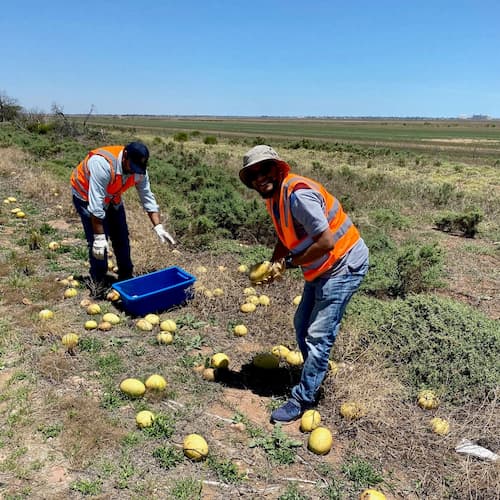- $6.344 million investment to support sheep and goat industry
- Electronic tags to modernise biosecurity system
- Vital reform lifts preparedness for emergency animal diseases
The Queensland Government will invest $6.344 million to support Queensland sheep and goat producers, saleyards, processors and livestock agents implementing mandatory individual electronic identification (eID).
Individual eID for sheep and managed goats will commence implementation in Queensland from 1 January 2025 as part of an agreed national initiative.
All states and territories will work towards mandatory implementation of sheep and goat eID alongside industry to enhance national biosecurity by track and trace in case of an emergency animal disease (EAD) outbreak.
The Queensland Sheep and Goat eID Assistance Package Scheme will provide:
- A 50% rebate up to $1600 (per Property Identification Code (PIC) based in Queensland) to sheep and managed goat producers for eID readers and eID devices.
- A 50% rebate up to $2500 (small saleyards) or $65,000 (large saleyards) for eID readers, software and hardware.
- A 50% rebate up to $2500 (small processor), or $10,000 (medium processors), or $85,000 (large processors), for eID readers, software and hardware.
- A 50% rebate up to $1600 to Queensland livestock agents and show society sub chambers for eID readers.
Details of how to apply for the rebates and when applications will open will be announced in coming weeks.
To learn more about sheep and goat eID or watch the sheep and goat eID webinar visit the .
Why move to electronic identification?
Moving to individual eID devices will enhance the national program allowing for a more accurate way to track and trace in the event of an animal disease.
eID technology has been used successfully for cattle in Australia since 2005 and sheep and goats in Victoria since 2017.
The national eID system has three elements to enable rapid contact tracing:
- Each location has a property identification code (PIC).
- A high-frequency electronic device (eg. ear tag) with a microchip inside to individually identify each animal.
- Enter the necessary movement information for each animal into the ³Ô¹ÏÍøÕ¾ Livestock Identification System (NLIS) database.
The Queensland Traceability Advisory Group (QTAG), including government agencies and key industry representatives across the sheep and goat supply chain, has been meeting to plan the eID rollout across the state and support producers.
Queensland will transition to eID for sheep and managed goats in two stages:
- Sheep and managed goats born on or after 1 January 2025 will be identified with an NLIS-accredited eID device before leaving their property of birth.
- All other sheep and managed goats leaving a property will need to be identified with an NLIS-accredited eID device from 1 January 2027.
Quotes attributable to Minister for Agricultural Industry Development and Fisheries and Minister for Rural Communities Mark Furner:
“Queensland is moving to mandatory electronic identification (eID) for individual sheep and goats through the ³Ô¹ÏÍøÕ¾ Livestock Identification System (NLIS),” Mr Furner said.
“We need a fast and accurate sheep and goat traceability system to protect Queensland’s livestock industry from an emergency animal disease (EAD) outbreak.
“Implementation of an eID system to individually trace sheep and goats will also deliver national and international standards of traceability.”
Quotes attributable to Queensland Chief Veterinary Officer Dr Allison Crook:
“A robust traceability system is the cornerstone of any successful response to a biosecurity incursion in Australia, Dr Crook said.
It is extremely important that government agencies and key stakeholder groups across the sheep and goat industry continue to work together to ensure a smooth transition.”






